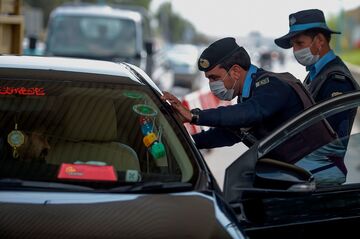Pakistan’s central bank said it’s ready to take action to support financial markets in the face of the coronavirus pandemic, which has led to a sell-off in the country’s bonds.
Ad
Pakistan has seen net sales of $772 million in short-term rupee debt this month after eight successive months of purchases that totaled $3.1 billion.
“The current market volatility in Pakistan is externally driven and the strengthening in the fundamentals of Pakistan’s economy that drove the improvement in Pakistan markets before the outbreak of coronavirus remains intact,” State Bank of Pakistan Governor Reza Baqir said in an email. The central bank “is monitoring the situation closely and remains ready to take any actions needed to address disorderly market conditions.”
Pakistan’s central bank intervened on Friday, helping the rupee advance 0.1% after a four-day decline, according to people familiar with the matter. Global central banks stepped up their crisis-fighting measures last week in a campaign to keep markets functioning and economies growing, including interest-rate cuts, asset purchases, currency interventions and liquidity injections.
Pakistan’s economy is stabilizing under a $6 billion bailout program by the International Monetary Fund after a deficit blowout. To contain the damage, the nation doubled its interest rate and devalued its currency by half since late 2017.
High interest rates encouraged investors to pile into the nation’s local-currency bonds like never before, but the latest global turmoil started an outflow.
The selling “shows that this money can be fickle and can move based on concerns other than Pakistan,” said Abdul Kadir Hussain, head of fixed-income asset management at Arqaam Capital Ltd. in Dubai that handles assets worth $450 million. “So while it’s not necessarily a bad thing to have foreign interest in the local bond market, it just means that the central bank has to be very nimble and be prepared for periods of volatility like we are currently experiencing.”
“If investors are able to enter and exit seamlessly in this period of volatility without major moves in the rupee, it will only increase investor confidence in the viability and depth of the market for foreign investors,” said Hussain.
The governor who joined from the IMF last year has also made the currency more market-driven. It has shifted to a market-based exchange rate from a managed-float but does not rule out intervention.
The central bank “is committed to a market-based exchange rate and intervenes when necessary to address disorderly market conditions,” said Baqir.
Bloombreg

Comments
Post a Comment